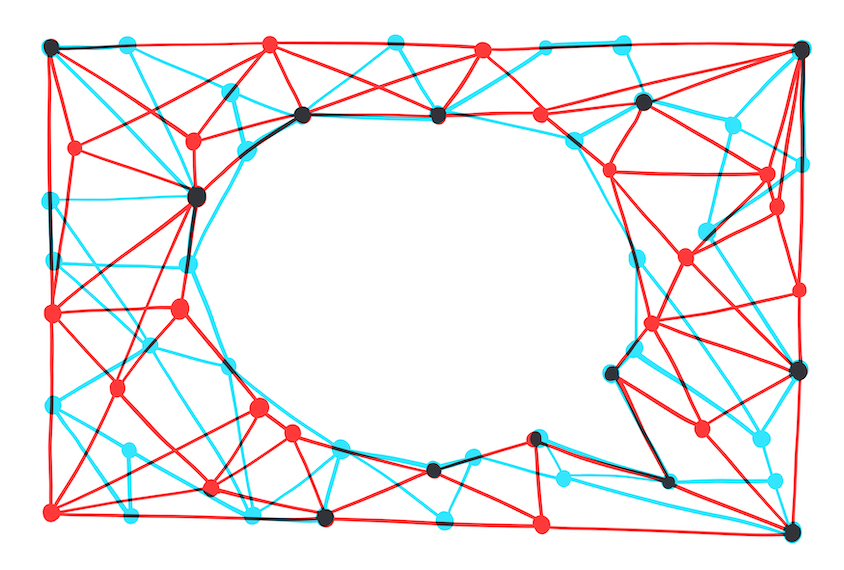Martin Picard of Columbia University detailed his team’s study, “Brain mitochondrial diversity and network organization predict anxiety-like behavior in male mice,” published in Nature Communications 10 August. Spectrum published a collection of coverage on the link between mitochondria and autism earlier this week.
How we interact with the world – our perceptions, reactions, behaviors – are driven by brain biology. But what part?
We find that mitochondrial energy production capacity in specific brain areas explains a large fraction of mouse behavioral differences https://t.co/UzrfjNJ1Oa
— Martin Picard (@MitoPsychoBio) August 11, 2023
Christoph Anacker of Columbia University and D. Parker Kelley of the University of California San Francisco replied to Picard.
Such a fantastic comprehensive paper from @MitoPsychoBio lab characterizing stress effects on mitochondria across the brain. So happy to have been part of this great collaboration! https://t.co/1ciJs9LlYa
— Christoph Anacker (@Der_Scientist) August 14, 2023
Wow! Up to 50% of between animal behaviors are attributable to differences in cortico-striatial mitochondrial function! Not that surprising considering that mito control neuronal firing, neurogenesis, plasticity, and lots of glial functions, but so freaking cool to map this out! https://t.co/UKqcN2bF8u
— D. Parker Kelley (@sequencemyneuro) August 13, 2023
Maiko Uemura of Kyoto University and Stefano Berto of the Medical University of South Carolina commented on the study, “Modeling idiopathic autism in forebrain organoids reveals an imbalance of excitatory cortical neuron subtypes during early neurogenesis,” published in Nature Neuroscience 10 August.
The organoids derived form iPSCs of boys with idiopathic autism spectrum disorder (ASD) and their unaffected fathers revealed that ASD pathogenesis involved a disruption of the balance b/w excitatory neurons of the dorsal cortical plate and other lineages.https://t.co/pQ4mwpL3vC
— Maiko Uemura, MD, PhD (@UemuraMaiko) August 15, 2023
Modeling idiopathic autism in forebrain organoids reveals an imbalance of excitatory cortical neuron subtypes during early neurogenesis
Amazing paper from Vaccarino lab! https://t.co/G1Yztizp68
— Stefano Berto, PhD (@StefanoBerto83) August 14, 2023
Ashlea Segal of Yale University shared a link to her study, “Regional, circuit and network heterogeneity of brain abnormalities in psychiatric disorders,” published in Nature Neuroscience 14 August.
It’s finally out in @NatureNeuro! A special thanks to @AFornito and @amarquand for their perseverance in getting this out. https://t.co/78wBwAZWiD@NSB_Lab @turnerinstitute https://t.co/LxZFBHow0O
— Ashlea Segal (@AshleaSegal) August 14, 2023
Tim Lawn of Kings College London replied to Segal.
Really great work! One of those obvious elegant ideas you can’t believe didn’t occur to you. Also… “Normative modeling of other phenotypes, such as those obtained with functional or molecular imaging, may reveal stronger separation between groups” –> watch this space???? https://t.co/X09kmnjQ3u
— Tim Lawn (@lawn_tim) August 15, 2023
The Allen Institute shared the article, “Sharp resolution, big samples: ExA-SPIM microscope accelerates brain imaging,” published in Nature 11 August. Spectrum covered ExA-SPIM on 14 July.
Post by @alleninstituteView on Threads
Steven Sheridan of Harvard University linked to his team’s study, “Loss of function in the neurodevelopmental disease and schizophrenia-associated gene CYFIP1 in human microglia-like cells supports a functional role in synaptic engulfment,” published in Biological Psychiatry 10 August.
Jason Moore of Cedars-Sinai shared a link to the study, “Genome-wide prediction of disease variant effects with a deep protein language model,” published in Nature Genetics 10 August.
Alfred George, Jr. of Northwestern University shared his team’s study, “Epilepsy-associated SCN2A (NaV1.2) variants exhibit diverse and complex functional properties,” published in the Journal of General Physiology 14 August.
Very proud to see our latest work on #SCN2A online @JGenPhysiol. Great work by Chris Thompson (@Channelsrus25) in collaboration with @JohnMillichapMD. Might be the first time patch clamp data are presented as volcano plots. https://t.co/R2D73VAcCh
— Al George (@nupharm1) August 14, 2023
Takei Yosuke of the University of Tsukuba posted the article “Unwritten rules of tenure,” published in Spectrum 9 August.
Unwritten rules of tenure https://t.co/GOb1oajR2M Newsletters @Spectrumより
— Takei Lab (@LabTakei) August 13, 2023
That’s it for this week’s Community Newsletter! If you have any suggestions for interesting social posts you saw in the autism research sphere, feel free to send an email to [email protected].






